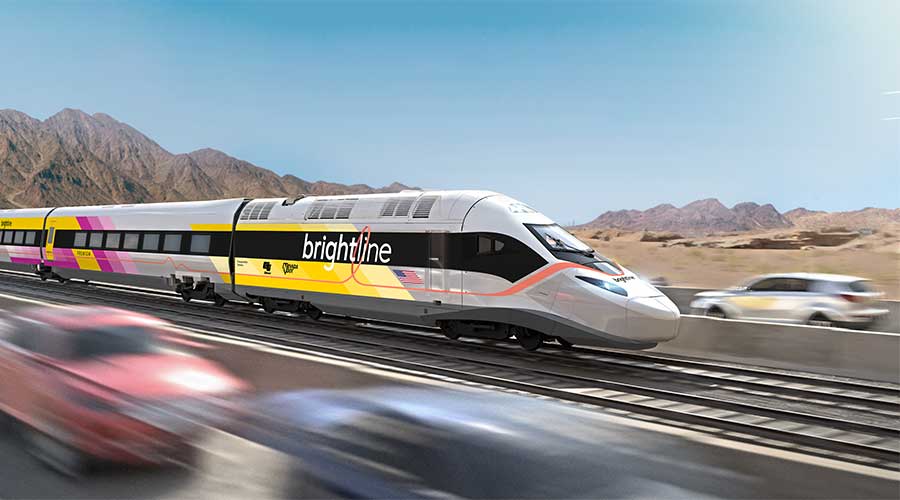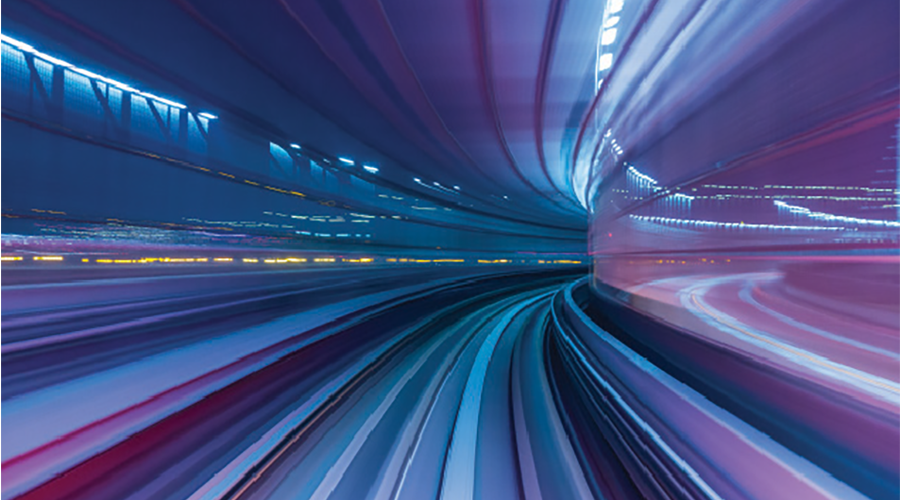Stay updated on news, articles and information for the rail industry
 railPrime
railPrime
October 2015
Part 1 : Progressive Railroading's Passenger Rail at a Glance 2015: Preface
Part 3 : Progressive Railroading's Passenger Rail at a Glance 2015: Colorado, Florida and Georgia
Part 4 : Progressive Railroading's Passenger Rail at a Glance 2015: Illinois and Missouri
Part 5 : Progressive Railroading's Passenger Rail at a Glance 2015: New Jersey, New York, and Ohio
Part 6 : Progressive Railroading's Passenger Rail at a Glance 2015: Oregon and Pennsylvania
Part 7 : Progressive Railroading's Passenger Rail at a Glance 2015: Texas
Rail News: Passenger RailProgressive Railroading's Passenger Rail at a Glance 2015: Illinois and Missouri
ILLINOIS
Chicago Transit Authority (CTA)*
CTA operates rail service on eight routes, as well as bus service, in Chicago and 35 suburbs. Rail service launched in 1947.
Route miles: 224.1 track miles
Rolling stock: 1,356 rail cars
Annual rail ridership: 234.9 million trips (2014)
Annual operating budget: $1.44 billion (FY2015)
Number of stations: 146
The CTA is pursuing a number of projects to improve service, vehicles and facilities. The agency’s 2015 budget called for expanded rail service to meet growing ridership, which was expected to increase more than 2 million rides in 2015.
Major projects scheduled to begin or continue include the:
• 95th Street Terminal project, a $240 million effort that began in fall 2014 and will expand and upgrade the 95th/Dan Ryan bus and rail station;
• Continuation of the environmental review for the proposed Red Line Extension from 95th Street to 130th Street and Phase I of the Red and Purple Modernization Program;
• $203 million reconstruction of the Wilson station for the Red and Purple lines;
• Opening of the new Cermak/McCormick on the Green Line, CTA’s 146th rail station;
• Continuation of the four-year Your New Blue program to upgrade the O’Hare branch of the Blue Line;
• $71.2 million Ravenswood Connector project to upgrade track and related rail structure between the Chicago and Armitage stations on the elevated Brown and Purple Express lines; and
• Complete delivery of all 714 5000-series rail cars as part of the CTA’s ongoing fleet modernization; receive bids for the next generation of rail cars, the 7000 series, to replace the CTA’s oldest cars and reduce the fleet’s average age to 10 years by 2022 from more than 25 years in 2011.
* Information source: www.transitchicago.com
Northeast Illinois Regional Commuter Railroad Corp. (Metra)
Metra provides commuter-rail service between the downtown Chicago business district and 241 stations in northeastern Illinois over 11 routes totaling nearly 500 route miles. Metra operates more than 700 weekday trains, providing 300,000 passenger trips a day.
Year service launched: 1984, but commuter rail service was operated by private railroads prior to Metra’s formation.
Route miles: 487.7 commuter rail
Rolling stock: 144 locomotives, average age 27; 841 rail cars, average age 28. Cars/locomotives on order: 160 EMUs ordered, 110 delivered; 50 remaining EMUs to be delivered by Q1 2016
Annual ridership: 83.4 million passenger trips in 2014
Annual operating cost: $753 million, 2015 budget
Annual capital cost: $330.1 million, 2015 budget
Number of stations: 241
Major projects include:
• Metra is completing the third bay of a bridge on the Englewood Flyover, which carries Metra’s Rock Island Line over a set of freight tracks on the south side of Chicago, eliminating conflicts and delays at a former grade-level crossing. The third bay will give Metra room to add a third track to the bridge if necessary in the future. Total cost is $142 million, and the project is expected to be completed in early 2016.
• In 2016, Metra hopes to start the next phase of its multi-year effort to rebuild the bridges that carry the Metra Union Pacific North Line over 22 streets on the north side of Chicago. Also in this phase, Metra would expect to complete the reconstruction of the Ravenswood Station, one of the busiest stations in the Metra system.
• Design is under way for the addition of a third track to two sections of the UP West that now have only two. Metra would expect to start that work in 2016.
• Three new stations are in the design phase, and Metra hopes to begin major renovations of several existing stations within the next year.
MISSOURI
St. Louis Metro
St. Louis Metro, an enterprise of Bi-State Development, is the operator of the St. Louis region’s public transportation system, which includes an 87 vehicle, 46-mile MetroLink light-rail system. MetroLink operates in the City of St. Louis and in St. Louis County, Mo., and in St. Clair County, Ill.
Service launched: light rail in 1993
Route miles: 46 light rail
Rolling stock: 87 light-rail vehicles, average age 18 years
Annual ridership: 16.6 million
Annual operating cost: $80 million
Annual capital cost: $154.9 million (3-year MetroLink infrastructure capital cost)
Number of stations: 37
Capital improvements underway or slated to begin in the next year:
• Eads Bridge rehabilitation, a $40.2 million structural repair and repainting of the rail deck of the historic Eads Bridge over the Mississippi River (2012-2016).
• Ewing Wall rehabilitation, a $5 million construction project of new retaining wall at Ewing Rail Facility in St. Louis (2015-2016).
• Illinois slopes remediation, a $5 million repair of failed slopes along the Illinois MetroLink alignment (2015-2016).
Major capital projects with contracts not yet let as of Sept. 3:
• New Infill MetroLink Station, the $15 million construction of a new light-rail station near Boyle Avenue in support of the developing Cortex Innovation District in the central corridor of St. Louis, as well as station updates at the nearby Central West End MetroLink Station, the busiest station on the light-rail system. Contracts for work will include design, civil, station finishes and systems. (2015-2018).
• Civic Center Transit Center, a $7.5 million expansion of the Civic Center Transit Center (a MetroLink station and bus transfer center) located in downtown St. Louis. Contracts for work will include civil and station finishes (2015-2016).
• Downtown tunnel repairs, a project involving structural repairs to the downtown rail tunnel, which was built in the 1800s.
The scope and subsequent budget of this project was being defined as of Sept. 3.
Part 1: Progressive Railroading's Passenger Rail at a Glance 2015: Preface
Part 2: Progressive Railroading's Passenger Rail at a Glance 2015: Amtrak and transit agencies in Arizona & California
Part 3: Progressive Railroading's Passenger Rail at a Glance 2015: Colorado, Florida and Georgia
Part 4: Progressive Railroading's Passenger Rail at a Glance 2015: Illinois and Missouri
Part 5: Progressive Railroading's Passenger Rail at a Glance 2015: New Jersey, New York, and Ohio
Part 6: Progressive Railroading's Passenger Rail at a Glance 2015: Oregon and Pennsylvania
Part 7: Progressive Railroading's Passenger Rail at a Glance 2015: Texas
Keywords
Browse articles on Chicago Transit Authority CTA Metra St. Louis MetroContact Progressive Railroading editorial staff.


 2025 MOW Spending Report: Passenger-rail programs
2025 MOW Spending Report: Passenger-rail programs
 Gardner steps down as Amtrak CEO
Gardner steps down as Amtrak CEO
 Guest comment: Oliver Wyman’s David Hunt
Guest comment: Oliver Wyman’s David Hunt
 Women of Influence in Rail eBook
Women of Influence in Rail eBook








